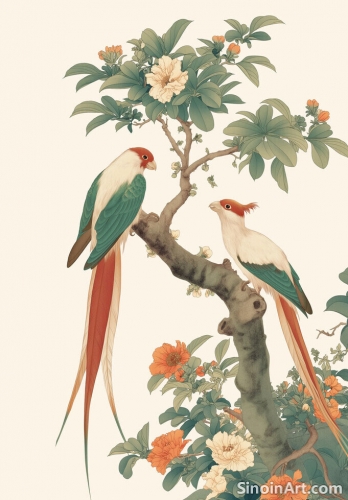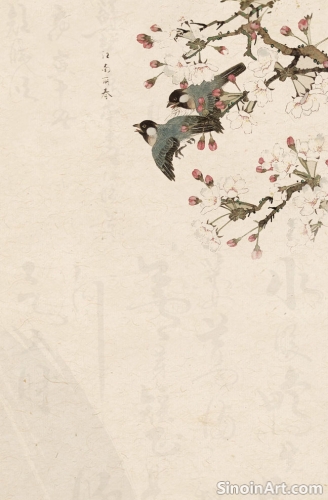Gongbi Painting in Museums and Galleries: Appreciating the Art in Person
|
Experiencing Gongbi painting in a museum or gallery setting offers a unique opportunity to appreciate the intricate details and delicate beauty of this art form in person. While digital images and reproductions can provide a glimpse, nothing can truly replicate the experience of standing before an original Gongbi artwork. Museums and galleries are essential spaces for preserving and showcasing this art form for both current and future generations.  The exhibition of Gongbi in museums and galleries provides a crucial opportunity for education. Curators often provide background information about the historical context, the techniques used, and the cultural significance of the artwork. This information can enhance the visitor's appreciation of the artwork and allow them to engage with the painting on a deeper level. Museums play an essential role in making art accessible to the public.  Seeing the delicate brushwork, the subtle gradations of color, and the intricate details firsthand is an experience that cannot be replicated in print or online. The viewer can appreciate the level of skill and the artistry that goes into creating a Gongbi painting. These works truly need to be experienced directly to fully appreciate the artist's effort and talent.  Museums and galleries also provide a space for interaction and contemplation. Visitors can spend time observing the artwork from different distances, examining the details, and considering the overall message. This provides a space for contemplation that fosters a deeper understanding and connection to the artwork. The experience of viewing art in a quiet space allows for a deeper engagement. The curatorial choices made by museums and galleries can influence the way in which viewers perceive Gongbi painting. The selection and arrangement of artworks can highlight different aspects of the tradition and introduce diverse artistic voices. The context in which the paintings are displayed adds meaning and can change the perception of the artwork. Ultimately, museums and galleries are vital for preserving and promoting Gongbi painting. They provide access to original works of art, foster education, and encourage cultural exchange. The experience of viewing Gongbi in person offers a unique and invaluable perspective on this important aspect of Chinese artistic heritage. The continued exhibition of these works ensures that the tradition remains vibrant and relevant. |
Tag : Gongbi in museums, art galleries, art exhibitions, experiencing art, museum collections
Related information
- The Legacy of Gongbi: Ancient Roots and Modern Blossoming
- Gongbi Painting and the Influence of Chinese Poetry
- Gongbi Painting and the Depiction of Waterfalls and Streams
- The Use of Gilding and Metallic Pigments in Gongbi
- Gongbi and the Depiction of Water: Flow, Reflection, and Atmosphere
This article explores the history and legacy of Gongbi painting, from its origins in the Tang Dynasty to its evolution through the Song and subsequent dynasties, and its current resurgence in contemporary art.
This article explores the influence of Chinese poetry on Gongbi painting, highlighting the shared themes, imagery, and symbolic language, and how this connection enhances the literary and artistic impact of the artwork.
This article explores the depiction of waterfalls and streams in Gongbi painting, highlighting the techniques used to capture the flow, movement, and reflective qualities of water, and how these works demonstrate a mastery of technique and appreciation for nature.
This article explores the use of gilding and metallic pigments in Gongbi painting, highlighting how these elements add a sense of luxury, luminosity, and symbolic meaning, while also requiring a high degree of skill and precision in their application.
The depiction of water, with all its fluidity, dynamism, and reflective qualities, is a significant element in many Gongbi paintings. Artists employ a variety of techniques to capture the movement, texture, and atmospheric effects of water, ranging from still ponds and meandering streams to rushing waterfalls and expansive seas. The depiction of water is often a central element of a successful composition, adding depth and beauty to a piece.